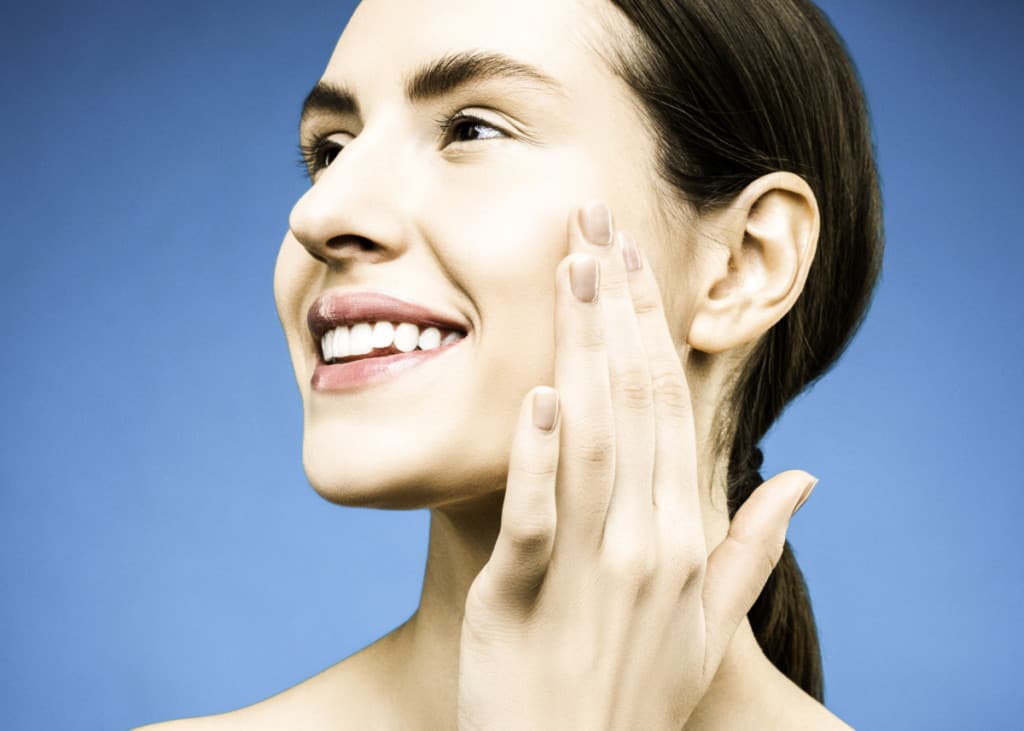
As a dental hygienist, I get this question from my patients, as they are looking for ways to whiten their teeth. My patients want to know if using a cheaper over-the-counter whitening method would be okay or if having their teeth whitened professionally at the dentist is worth the price and results.
Over-the-counter whitening solutions are not as effective as professional in-office treatments. Having a dental professional’s assessment addresses issues such as; rotated/crooked teeth, decay, dental work, gum disease, gum recession and diet, which all affect the success and longevity of whitening.
In this post, I go over the most popular whitening products on the market, what works, and what doesn’t. I also go over everything I tell my patients to do and what not to do before, during, and after a whitening treatment, be it at home or in the dental office.
Why you should think of having your teeth professionally whitened at the dental office
Having white teeth and whitening treatments are a hot commodity. However, many things are overlooked when choosing a treatment method that can considerably impact.
Before teeth are professionally whitened in the dental office, the teeth are professionally cleaned, removing the calculus (also known as tartar) and surface stain.
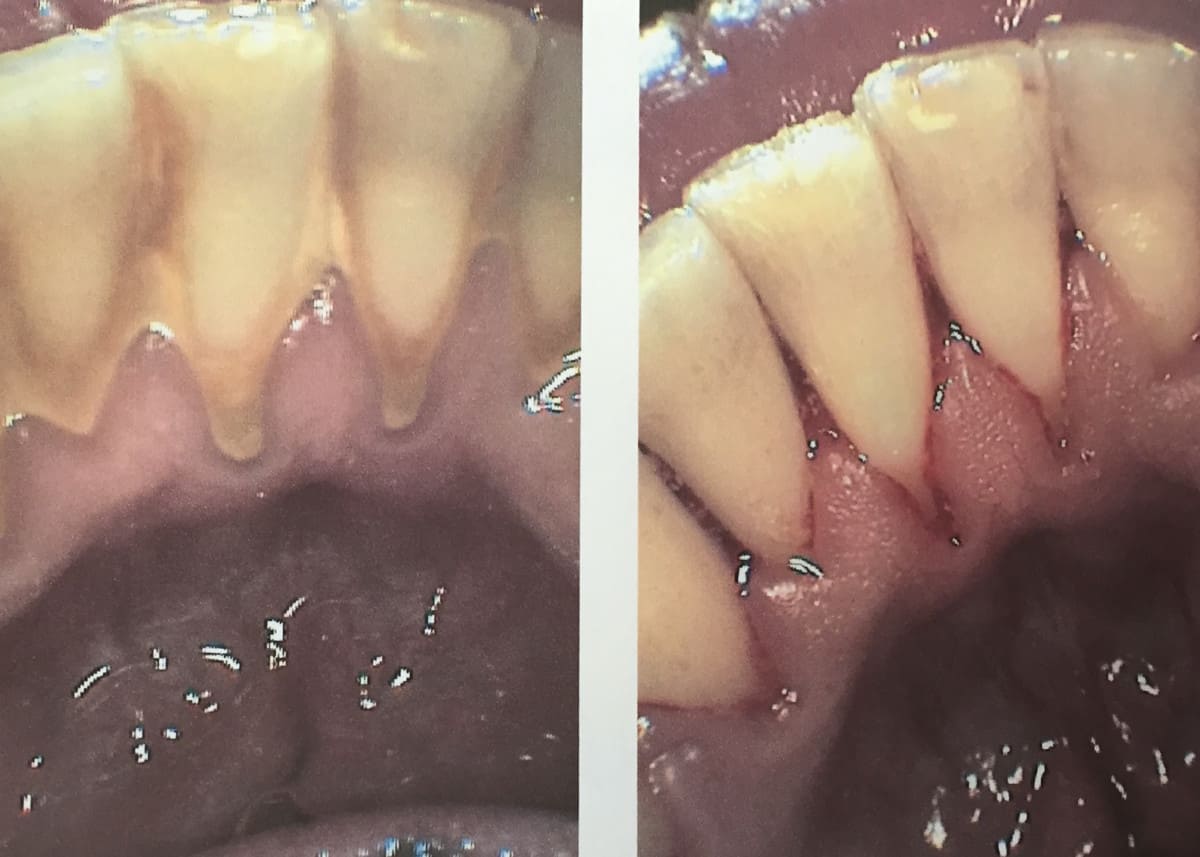
Calculus is calcified bacteria that is firmly adhered to the teeth and cannot be removed at home, and if not removed regularly, can contribute to gum disease. (Why regular dental hygiene appointments are so necessary.)
Calculus is porous and absorbs pigment from food, drink, and blood from unhealthy/inflamed gum tissue.
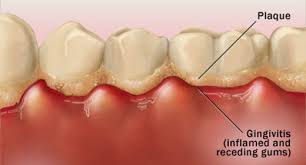
Most of the stain on our teeth is actually on the surface, embedded in the calculus and whitening treatments will do nothing to remove it. I would hate to waste money on things that won’t work, and I don’t want my patients to either.
Having a clean surface to work with allows the active ingredients in the whitening product to;
- Have more surface area to penetrate the tooth
- A superior result of much whiter teeth
In-office whitening uses a much higher percentage of peroxide and can achieve significant results more quickly.
The dental professional will discuss your oral health status with you before whitening your teeth. And they can provide you with an individual treatment plan that will work for you, and that… is priceless.
Also, any dental work in the mouth will not whiten—crowns, veneers, bonding, fillings etc. And there is even some evidence that whitening products can start to break them down, potentially shortening how long the dental work will last. This study expands more on how whitening can affect dental work.
expands more on how whitening can affect dental work.
However, the severity of damage is dependent on the product used and how frequently. Whitening your teeth a couple of times a year should not harm the teeth or dental work. I whiten my teeth about 1-2 times a year.
Not to say that at-home teeth whitening doesn’t work, some products do work, and I even recommend these at-home treatments to some of my patients. But these are specific cases.
Some over-the-counter teeth whitening solutions will harm the teeth and cause irreversible damage. So choosing the right one is imperative.
I want people to use safe and tested products on their teeth that won’t damage them in the long run. 🙂
How do teeth change colour and whiten?
When peroxide comes into contact with the tooth surface, a chemical reaction occurs, and the teeth are dehydrated. Dehydration of the tooth allows more peroxide absorption into the tooth to break down into oxygen which reacts with the stains to break them apart and “bleach” them.
No other whitening agents will whiten the teeth. Only hydrogen and carbamide peroxide will. (Carbamide peroxide contains hydrogen peroxide at a ratio of 1:3.)
Because the teeth become dehydrated during whitening treatment, it makes the tooth act as a sponge.
Because of the dehydration, the tooth will want to resorb, and rehydrate.
Watching what you eat and drink during and after teeth whitening treatments is crucial to prevent stains and increase the effectiveness of the whitening treatment. I go over this in more detail further down in this post.
For this reason, teeth whitening is much more effective when done in a shorter period of time.
Imagine using a product that takes up to 3 months to be effective, for example, whitening mouthwash. If you use it every day, your teeth will be in the dehydrated state for much longer, increasing the chance to absorb pigment and stain the teeth and barely making a difference in the tooth colour. My advice; avoid the whitening mouthwash!
What types of tooth stains are removed by professional teeth whitening?
There are two types of tooth stains, and whitening treatments only work against one.
Extrinsic and intrinsic are the two types of tooth stains.
Extrinsic stain (think the exterior of a house) is on the surface/outside of the tooth and can be removed by professional teeth cleaning.
Stains can also be absorbed into the soft plaque on the teeth. And flossing and brushing will help to remove it.
Again, having a dental cleaning before whitening will remove the extrinsic stain, so the whitening solution will penetrate the tooth more and provide a better result.
The intrinsic stain (think inside a house) is inside the tooth. And can only be removed/lightened with a teeth whitening agent, either carbamide or hydrogen peroxide.
Intrinsic stains can occur when the teeth develop under the gums, taking an antibiotic (tetracycline antibiotic is the most common). These stains are harder to remove and will take more treatments to improve, and sometimes whitening will not work.
Pigments from food and drink can also be absorbed into the teeth. This happens when our mouth is in a more acidic state. When our mouth is acidic (from our diet, saliva pH, and amount of bacteria), the teeth become softer because the acid breaks down the tooth, dehydrating it. Then anything we consume that has pigment can be absorbed into the tooth structure.
The stain often occurs more around the margins of dental work. And can even start to seep under the dental work, with whitening treatments not being effective. The dental work will have to be redone to restore the colour and remove the stain.
However, if you know that some dental work has to be re-done, it would be great to whiten the teeth before getting the work done.
When the dentist does the work, they will colour match the dental work to the natural colour of the teeth. So then, in the future, when you want to touch up your whitening, the dental work will be a threshold of where you want to be in terms of colour shade.
What are the dental office professional whitening solutions/products?
Having professional teeth whitening is much safer than doing it with over-the-counter products. Simply because you have a trained professional doing it, it’s a controlled environment, and all the essential information is given to you so your treatment will have the best outcome.
In-office whitening is usually a couple of hours long, and the dentist or hygienist will go over the entire procedure with you first and review your medical history.
The dental professional will protect your gums with a thick liquid material, and it hardens when we use a bright light on it. This prevents any whitening solution from getting on the gums and irritating them.
Some in-office treatments use a light. There is evidence that the light does nothing to impact how white the teeth get.
The professional in-office treatment often comes with custom take-home whitening trays. The take-home trays can be used to touch up your whitening in the future.
Custom trays that are taken home are moulded for your teeth. These custom trays take away the issue that whitening strips have of not covering the whole tooth surface or coming in contact with the gums.
If you have any crooked teeth or the gum line is not at the same level, there will be sections of the teeth that will be missed and won’t whiten.
What are the different types of over-the-counter teeth whitening products?
Over-the-counter teeth whitening solutions can vary in effectiveness and performance. And a lot of the whitening solutions online do not work, and are endorsed by famous influencers. And the funny thing about some of the people seen using the product online have veneers which do not whiten.
We have to be careful of what products are advertised and are they even effective and safe to use.
Over-the-counter teeth whitening products contain a minimal amount of the peroxide that will whiten the tooth. And some don’t contain any. This is scary that companies get away with selling ineffective products.
Strips
The most commonly used strips are Crest Whitestrips. These are the only over-the-counter teeth whitening products I will recommend to my patients.
I love talking to my patients about teeth whitening and giving them all the tools to have a successful teeth whitening session. When people know how to do it properly, they can achieve the best results.
I don’t want my patients to buy things that will not work and waste their money.
Whitening systems with light
There is no evidence that the light helps to whiten the teeth. And often, it is a UV light that can damage the skin.
You can find these teeth whitening products in beauty stores and all over social media, and they should be avoided. Mainly because most of the trays where you put the whitening gel are large and bulky, increasing the chance of it leaking out, affecting the gums, and potentially ingesting it.
Here is a study  showing that lights included in whitening treatments have no visible effects on the teeth whitening.
showing that lights included in whitening treatments have no visible effects on the teeth whitening.
Whitening pens
Teeth whitening pens have become increasingly popular. I wouldn’t even bother with them. Save the money! If you want to read more about whitening pens, I linked a post I wrote below.
Related post: Hygienist Explains; Do Teeth Whitening Pens Actually Work?
Whitening toothpaste
Most kinds of whitening toothpaste are abrasive and won’t actually whiten the teeth. Rather they abrade away the surface. Over time this can cause irreversible damage to the teeth.
Some kinds of toothpaste contain some peroxide, but it is a lower amount and often takes many weeks and months to see a noticeable change.
I have a story of a patient who came in to see me after not coming for a few years. His main complaint was how yellow his teeth were and his whitening toothpaste wasn’t working.
When I assessed his teeth, the top front ones barely had any enamel left. And I told him the reason why his front teeth were looking yellow was that he had moderate to a severe loss of enamel, and the yellow dentin (the tooth layer underneath the white enamel) was showing through.
He asked me how this could happen. And I said it can happen when we have aggressive brushing, paired with an acidic diet, or overuse of whitening toothpaste.
I could see the regret in his eyes as he told me he would scrub his teeth, focusing on the front ones three times a day with a whitening toothpaste.
I felt so bad for him when he asked me how to get the enamel back, and I told him he couldn’t. Once the enamel is gone… it’s gone. And the only way to get a whiter smile would be to have veneers or crowns put on the front teeth.
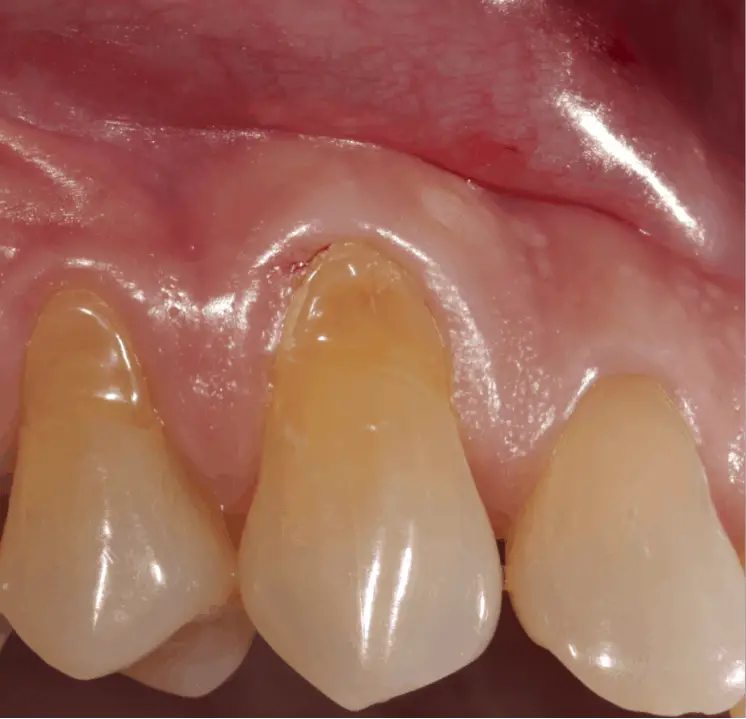
He was angry that the toothpaste packaging didn’t tell people this and that if he had known, he never would have used whitening toothpaste.
The only time where I would ever recommend someone to use a whitening toothpaste is if they are prone to surface stains, maybe they’re a smoker, wine drinker, or coffee and tea drinker. And even then, I don’t want them using it every day, only once in a while.
These are the same reasons I don’t polish my patient’s teeth that often, only if they need it. If you want to know if you should skip the teeth polishing at your next dental cleaning, I linked the post below.
Related post: Why You Shouldn’t Have Your Teeth Polished at the Dentist
Whitening mouthwash
The main issue with whitening mouthwash is how disgusting they taste! I tried it once to test out all these over-the-counter whitening products, and I spat it out right away and regretted wasting my money on it!
Whitening mouthwashes usually contain a meager amount of the active ingredient and will take months even to get a shade whiter. I’m not the biggest fan of mouthwash, and usually, I tell my patients to skip it unless there is a concrete reason to use it.
Whitening gum
Whitening chewing gums will not whiten your teeth. They can help to stimulate our salivary glands, so the saliva will help to rinse away any pigment on the teeth before it settles into the teeth and stains them.
Beauty therapists providing whitening treatments
I wasn’t sure where to put this information in this post because it doesn’t fall into either in-office professional treatment or over-the-counter.
But I need to touch on.
Have you ever walked through a mall where a store is offering “professional teeth whitening”? These aesthetic salons that offer this should not be.
There are people out there performing “professional” teeth whitening when they are not licensed dental professionals. In some countries, this is illegal and not allowed, but in others, it is permitted.
Only dental professionals can diagnose dental diseases and issues.
And if this crucial step is missed before teeth whitening, irreversible damage can happen, or you end up wasting all of your hard-earned cash.
Please take this advice and don’t receive teeth whitening from anyone who is not a dental professional.
What whitening product/solution is right for you?
It would be best if you talked with your dental professional before taking on any whitening treatments. But you can use what I have written in this post to help you decide which route you want to take to get a whiter and brighter smile!
What to do before, during, and after a teeth whitening treatment!
I don’t tell my patients that they cant do over-the-counter whitening solutions, but I give them crucial advice for them to get the best results possible. And this is the same for in-office treatment.
Diet
Everything that we eat and drink comes in contact with our teeth and can stain them.
When the teeth are whitened, they are dehydrated, making our teeth act as a sponge, soaking up even more of the pigment from our food and drink.
Foods to avoid
Anything that has a solid colour will not be your friend while you whiten teeth and for a short time after the whitening treatment is done.
Food and drink to avoid during and right after whitening; Coffee, tea, red wine, chocolate, blueberries, spinach, blackberries etc.
Pigments will be absorbed into the tooth and can decrease the effects of the whitening and cause stain. Any food that has dark pigmentation can be absorbed.
You will want to avoid these foods and drinks for at least 48 hours after whitening your teeth. And if you do consume anything pigmented, rinse your mouth out right away with some water. It will help rinse away the pigment before it can absorb into the tooth surface.
Toothpaste to use
Before whitening your teeth, you will want to use a toothpaste with potassium nitrate as one of the ingredients. Potassium nitrate desensitizes the nerve of the tooth.
You will want to use this toothpaste for at least two weeks before whitening your teeth. However, to get the greatest benefit, there is one very important instruction.
DO NOT RINSE YOUR MOUTH out or consume anything by mouth for at least 30 minutes after flossing and brushing.
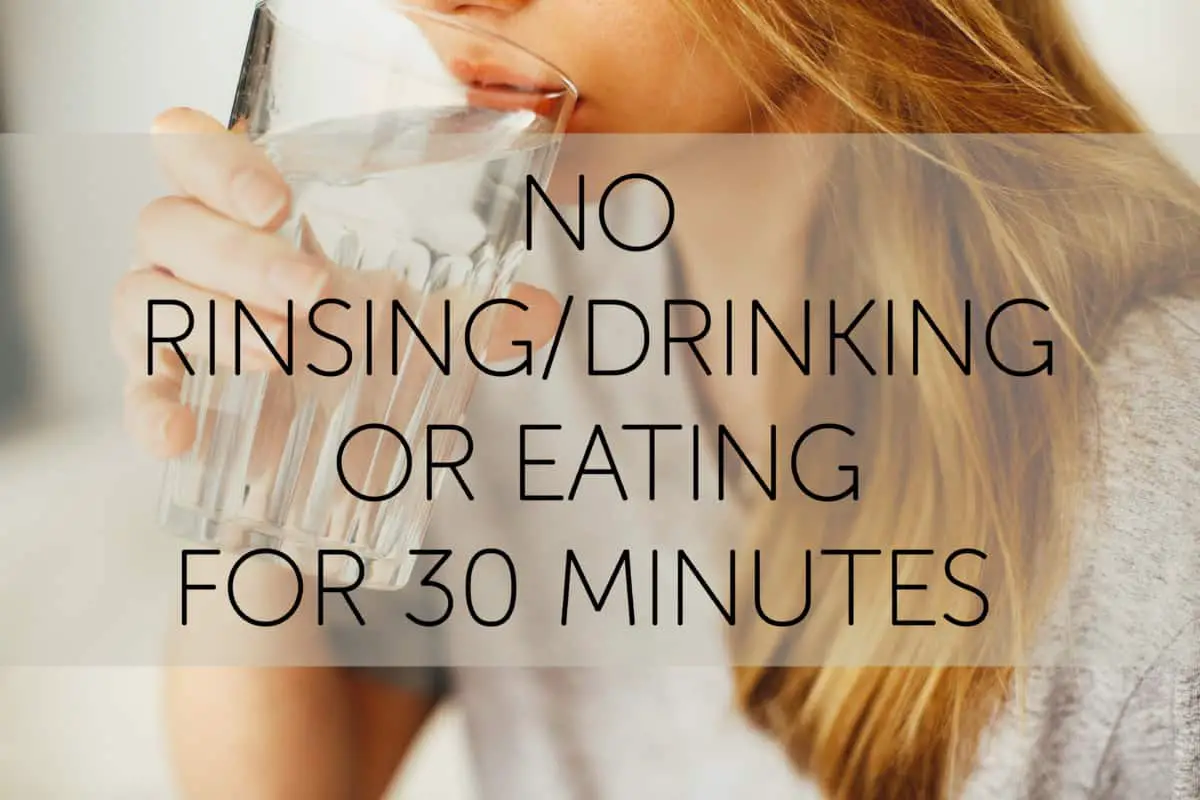
WHY is this so important? If you rinse your mouth out right after brushing your teeth, you will rinse away most of the potassium nitrate so it won’t reduce the sensitivity from the teeth whitening.
Sensitivity
It is normal to experience some sensitivity during and after whitening your teeth because teeth whitening can cause the nerve of the tooth to become hypersensitive.
Tip: If you have custom whitening trays, you can put some toothpaste that contains potassium nitrate into the trays and put them in your mouth like you would when you are whitening. Leave it for at least 15-30 minutes. The potassium nitrate will help desensitize the tooth.
If you don’t have custom whitening trays, you can just put about a grain of rice-sized amount of toothpaste on your fingertip and gently rub it into the sensitive teeth. You will want to rub it into the teeth for at least 60 seconds. Sensodyne has a toothpaste called Rapid Relief and works exceptionally well in this situation.
If you want to read more about the science behind teeth whitening and a more in-depth explanation, this study is the place to go.
is the place to go.
How to avoid stain before it happens
The best way to have white teeth and keep them white is to prevent the stain in the first place. I go through the methods how you can easily prevent stains in the article I linked below. 🙂
Related post: Snub Coffee Stains; Dental Hygienist’s Guide to White Teeth
Holly 🙂


